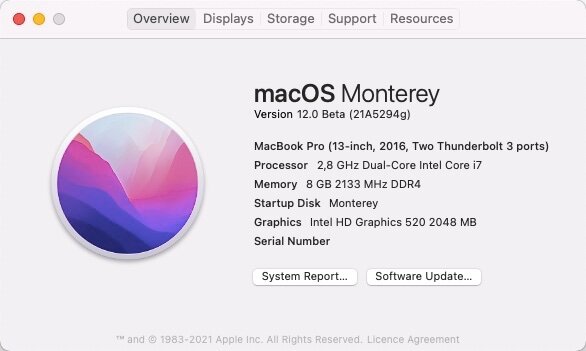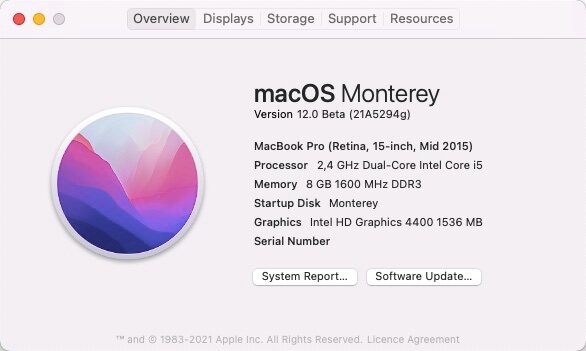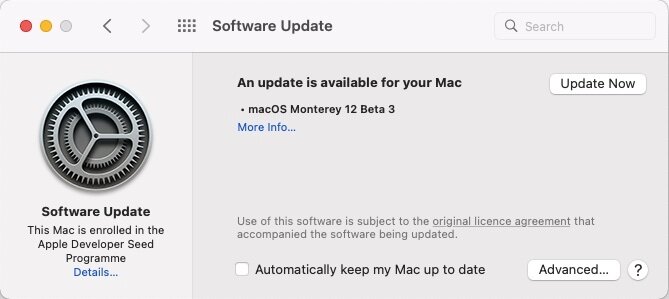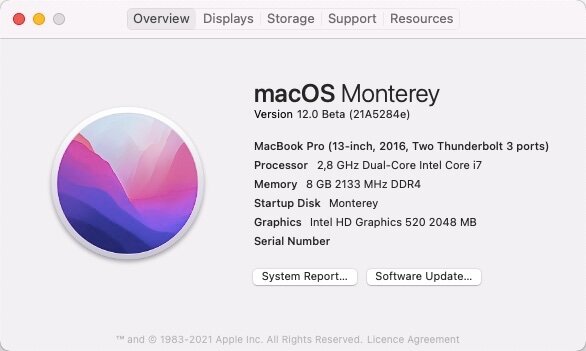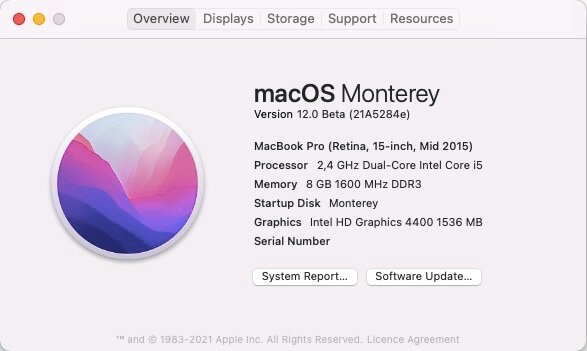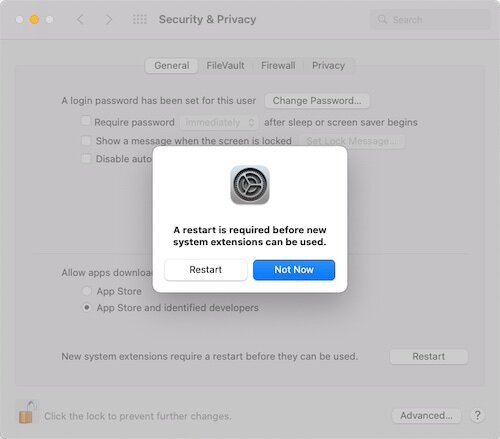-
Posts
10067 -
Joined
-
Last visited
-
Days Won
569
Content Type
Profiles
Articles, News and Tips
Forums
Everything posted by Hervé
-
The old laptops are totally obsolete today but they did run Mac OS X extremely well; I remember fondly the days when I had my D620 and D630 and, God!, did SL feel fast on those! But they've had it by now (especially the flawed nVidia models) for most basic stuff. NB: as per our recent news update on the matter, Lion and Mountain Lion are available off Apple for free so no need for pirate repositories.
-
This guide is over 8 years old and is obsolete as far as EDP is concerned. Other than removing the deprecated references to EDP tool, I'm not going to revisit those old ML with MLPF guides in 2021 given the obvious obsolescence of the D Series and Mountain Lion. You'd also find it difficult to get your hands on the old MLPF tool these days. Anyway, if you do, you may still follow the guide but just forget about the EDP part. Complete Chameleon/Enoch bootpacks are included in the MLPF guides. I had mentioned this in the ML/MLPF guide for the D430 but must have forgotten to do the same for the other guides: There are no other guides on this site to install unsupported ML on D Series laptops that I know of.
-

Dell E6320 with Intel i7-2640M: help installing High Sierra
Hervé replied to foxm's topic in The Archive
I would invite you too grab the bootpack I posted in my E6220 Mojave guide before I sold the laptop. I re-worked the entire ACPI patches through 5 x SSDT rather than a patched DSDT. SSDT-IMEI, SSDT-PNLF and SSDT-XOSI are all pre-made readily-available tables, only the SSDT-PM is obviously specific to the i5-2520M CPU that was fitted to my E6220. SSDT-Q66 is a table I built to take care of brightness keys and should be applicable to the E6320 too. For your i7-2640M CPU, you should generate your own CPU power management table with Pike R Alpha's well-known script but here's a pre-made one: SSDT-PM_i7-2640M.zip The Clover config is re-usable on the E6320 but a few adjustments are expected to be required on the properties injection part because I did add some cosmetic info that were specific to ExpressCard slot or mini-PCIe slots at their exact IO location. These locations may differ on the E6320 but this can be adjusted once you've provided an extracted IOReg. Rest assured that the properties injected in the E6220 config will not interfere or cause issues. On the kexts front, all is re-usable too except the USBPorts which was specifically built for thew E6220. I expect you'd have to build your own through Hackintool app. Meantime, you would probably need to use USBInjectAll kext as a temporary replacement. -

[Solved] Latitude e5450: no audio in Big Sur 11.5!
Hervé replied to Randamixer's topic in The Archive
Update Lilu and its PlugIns to latest versions. You're using very old versions from early 2020. You should also enable the patch to rename HPET's _CRS to XCRS in the original DSDT since you're injecting a modified one through SSDT. That patch is disabled in your config. -

Dell Optiplex 3040: Shuts down after installer boots
Hervé replied to audiosurplus's topic in Dell Desktops
Post a zipped copy of your bootloader EFI folder. Please specify which version of bootloader you used. -

Dell Optiplex 3040: Shuts down after installer boots
Hervé replied to audiosurplus's topic in Dell Desktops
GT710 will be Ok as long as it's a Kepler card, not a Fermi one. Kepler cards are fully and natively supported OOB. -
All is ok then, it's the right one.
-
Is it really an Alps v7 model? It's been a couple of years since I last had an E7250 but I'm pretty sure the TouchPad worked Ok with Dr Hurt's VoodooPS2 kext for Alps. Is it the driver you're using?
-

Precision 3620 (Tower): seeking help to install Big Sur
Hervé replied to tluangahauhnar's topic in Dell Desktops
nVidia Quadro K620 is Maxwell and therefore unsupported beyond High Sierra with which it requires the nVidia Web Driver since Maxwell cards are not natively supported. You'll have to replace your graphics card by a supported model if you want to run Big Sur with a discrete graphics card. The only nVidia graphics cards that remain fully and natively supported since macOS Mojave are Kepler ones. See our Supported/unsupported graphics cards thread in our Technical Info, R&D->Graphics section for guidance. Of course, you may choose to fallback to your Intel HD P530 iGPU instead. That should be fully supported with the usual settings for Intel HD 530 graphics. -
Whilst I can understand @Baio77's desire for a single unified patching SSDT (it looks nice and simple), to me it's a kind of step back because it totally hides what patches are applied without looking into the SSDT and it makes ACPI troubleshooting much more difficult. Dedicated specifically-named SSDTs have the advantage of being readily identifiable in terms of patches and can easily be individually enabled/disabled for troubleshooting. Now I say this, I say nothing of course...
-
4th beta released July 27th, 2021. Build 21A5294g. Ok on my Latitude E7270 (Clover r5133) and Satellite Pro R50-B (OC 0.7.0).
-

E7270: Headphone jack only work if i have put the laptop to sleep mode
Hervé replied to unklbee's topic in The Archive
No issue on mine with Lilu v1.5.4, AppleALC v1.6.2 and layout #11 in current version 11.5.1 and Clover r5133. Was using the exact same setup in 11.5 without problems either. -

Latitude 7310: Journey to Catalina and Big Sur
Hervé replied to muttonhead411's topic in The Archive
Realtek RTL8153 GigEthernet of WD15 Dock certainly used to work OOB in Mojave and Catalina: https://osxlatitude.com/forums/topic/11410-dell-latitude-7490-with-i7-8650u-intel-uhd-620-and-1920x1080-lcd-mojavecatalina/?do=findComment&comment=90288 I would therefore expect it to work for you too. -

E5470: Audio line-in not working on Big Sur (ALC293 with Layout ID = 11)
Hervé replied to PMD's topic in The Archive
Please consult our FAQ section re: SIP. There's a dedicated thread to describe it and the values that may be used. By all means, do try and inject CodecCommander from that folder, but if it does not load, you'll have to cache it from /L/E; this will have to be done manually through Terminal and after enabling Gatekeeper: sudo spctl --master-enable Reboot then copy the kext to /L/E sudo cp -R <path>/CodecCommander.kext /L*/E*/ Authorise the kext through Security & Privacy PrefPane and reboot again. You may then disable Gatekeeper again if you wish: sudo spctl --master-disable -
3rd beta released July 14th. Build 21A5284e. Straightforward update with Clover r5133 on my Skylake/HD520 Latitude E7270. And same with OC 0.7.0 on my Haswell/HD4400 Satellite Pro R50-B.
-

E5470: Audio line-in not working on Big Sur (ALC293 with Layout ID = 11)
Hervé replied to PMD's topic in The Archive
Are you using CodecCommander kext at all? If not, try it. -

Dell E6430 Open Core | Big Sur | 1600x900 - HDMI Not working
Hervé replied to arijitsinha's topic in The Archive
With Big Sur, do not attempt to replace a vanilla kext in /S/L/E by a patched one. Simply apply the required changes either through on-the-fly binary patches (as supported by Clover) or, most preferably, injected properties. -

Dell E6430 Open Core | Big Sur | 1600x900 - HDMI Not working
Hervé replied to arijitsinha's topic in The Archive
HD4000 laptops with screen resolution starting at 1600x900 require Capri layout 0x01660004. Unfortunately, that's a single port layout that only natively supports LVDS/eDP built-in LCD. That's why you need to patch your Capri framebuffer as detailed in the link provided by Jake so that you convert that single-port layout to a 4-port layout that'll support external displays, including HDMI. -
No, everything is Ok.
-
In case you ignore this, the nVidia RTX 2060 dGPU will not be supported. Only the UHD 630 iGPU of the Coffee Lake i7-9750H CPU can be used.
-
Hey, welcome back! 'been a while indeed. How are you? Looking forward to hearing from you on the forum.
-
I'd recommend using pre-existing/ready-made SSDTs rather than creating new ones. In all the Hacks I've had, ready-made ones never have been a problem.
-

How do I repair permissions and rebuild the cache in Big Sur & later?
Hervé replied to Hervé's topic in FAQs & Tutorials
Looks like the above method no longer works, certainly not in Big Sur 11.4, possibly before. @Slice reminded us that Gatekeeper can be used as an alternative. Many people often disable Gatekeeper by default through Terminal command: sudo spctl --master-disable Kexts can be cached from /L/E in Big Sur (and Monterey) by re-enabling Gatekeeper, copying the kexts to /L/E through Terminal via sudo commands and authorizing the kexts from Security & Privacy PrefPane. Upon such authorisation, Gatekeeper will rebuild the cache and restart macOS with the newly cached kexts. Gatekeeper can then be disabled again afterwards. sudo spctl --master-enable sudo cp -Rf <path>/xxxx.kext /L*/E*/ GateKeeper can be disabled again afterwards.- 1 reply
-
- 2
-

-

-
No patched DSDT should be required. Only SSDTs.
-
Can't find any reference to any Aspire (not espire) E 13 on Acer's web site. You'll have to post the correct reference of the model and its specs of course. This being said, the few Google findings I obtained for an Aspire E13 or ES13 all lead to low-end laptops with Bay Trail, Braswell or Apollo Lake CPUs and associated GT1 Intel HD/HD 500 graphics, i.e. platforms not compatible with macOS and therefore unsuitable as Hackintoshes. If this is your case, don't waste your time any longer. https://osxlatitude.com/forums/topic/2998-min-requirements-for-os-xmacos https://osxlatitude.com/forums/topic/8238-supportedunsupported-gpus-graphics-cards




